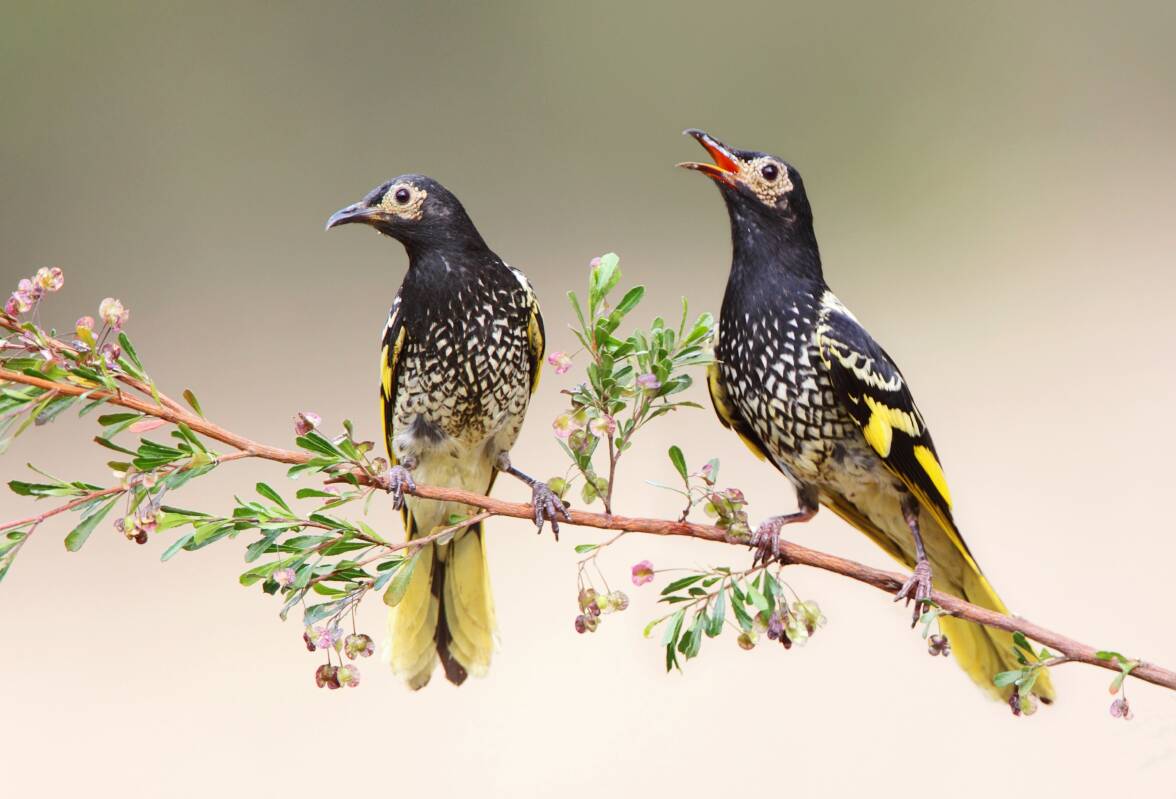
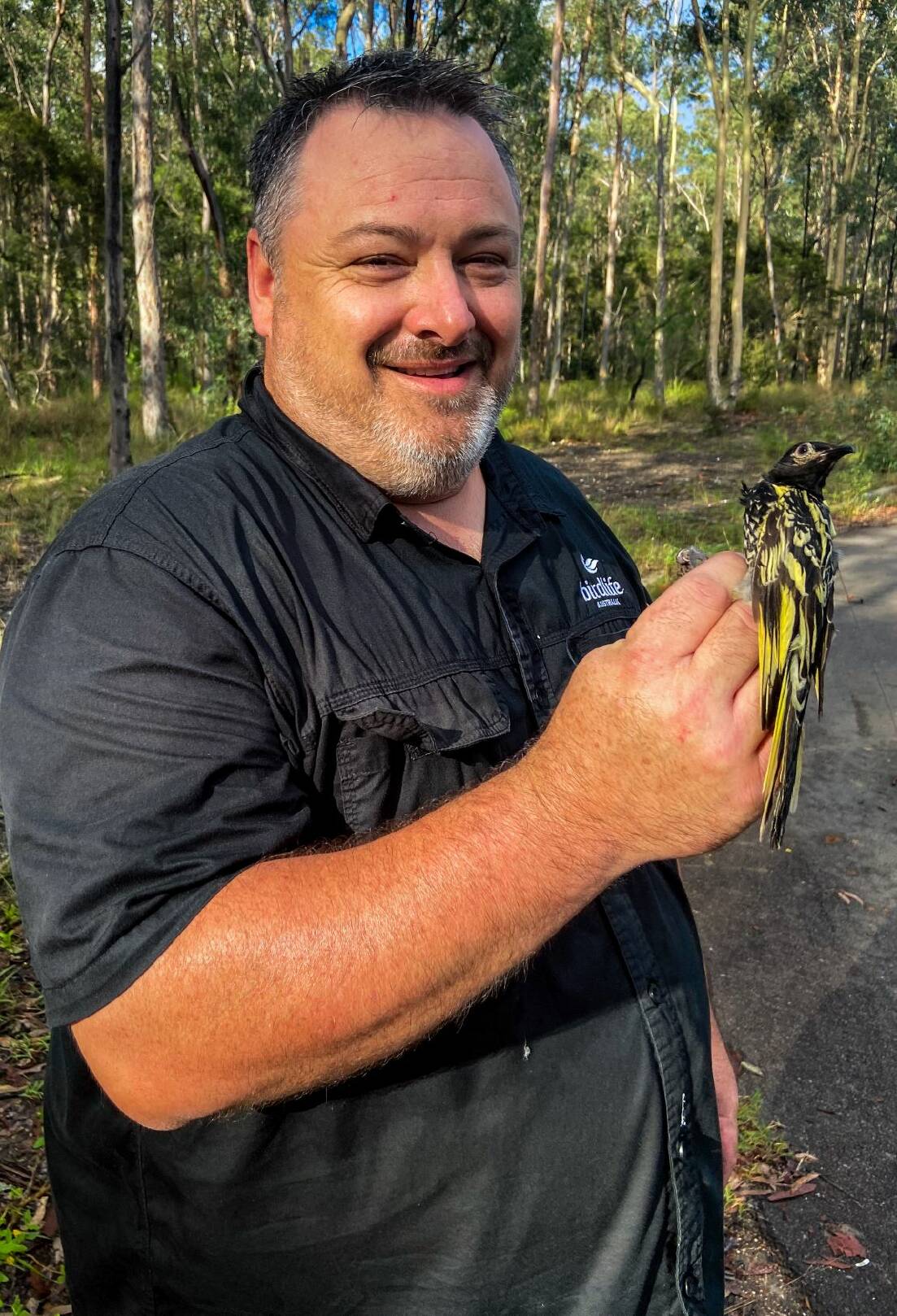
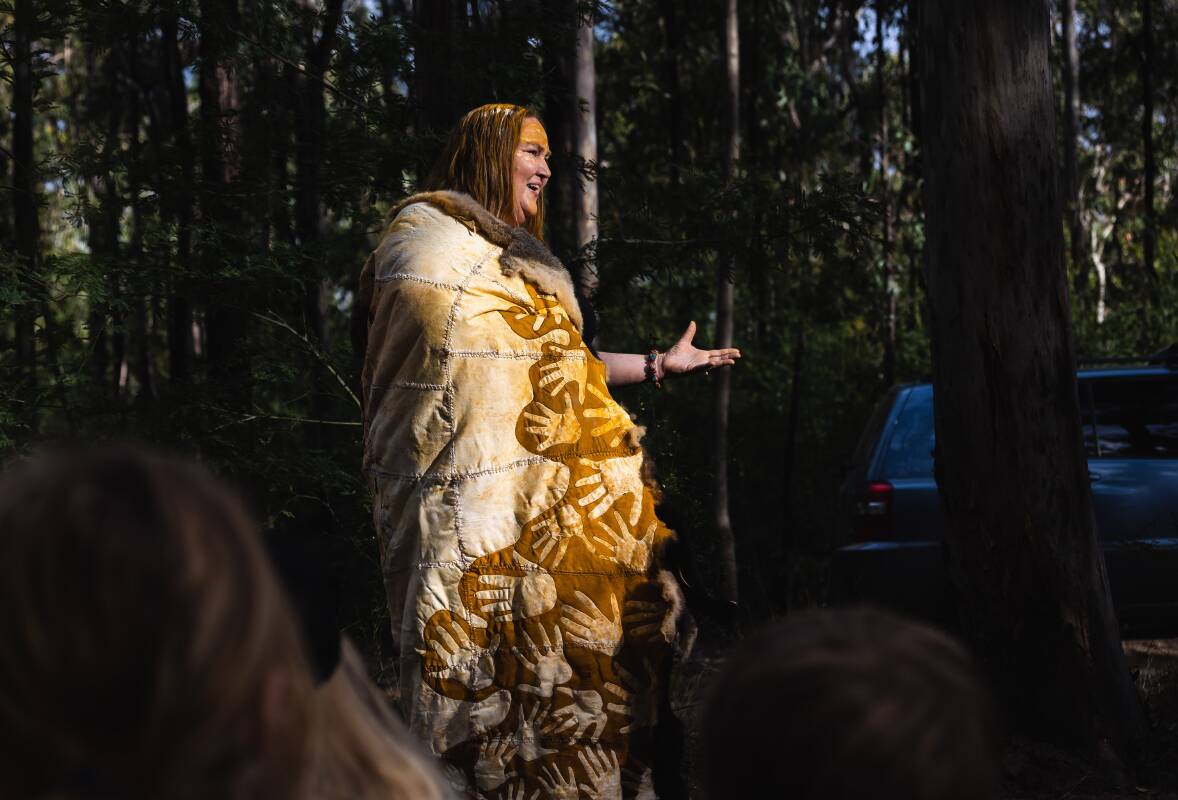
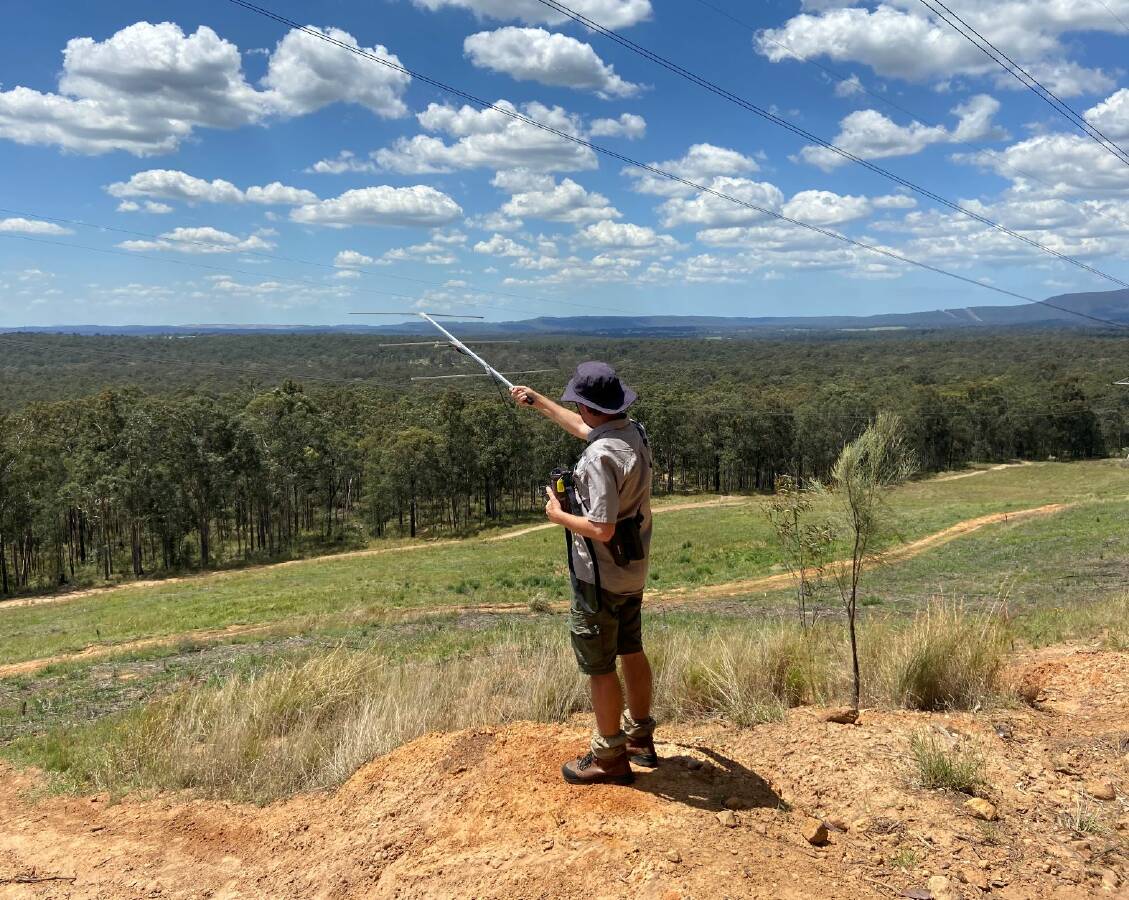
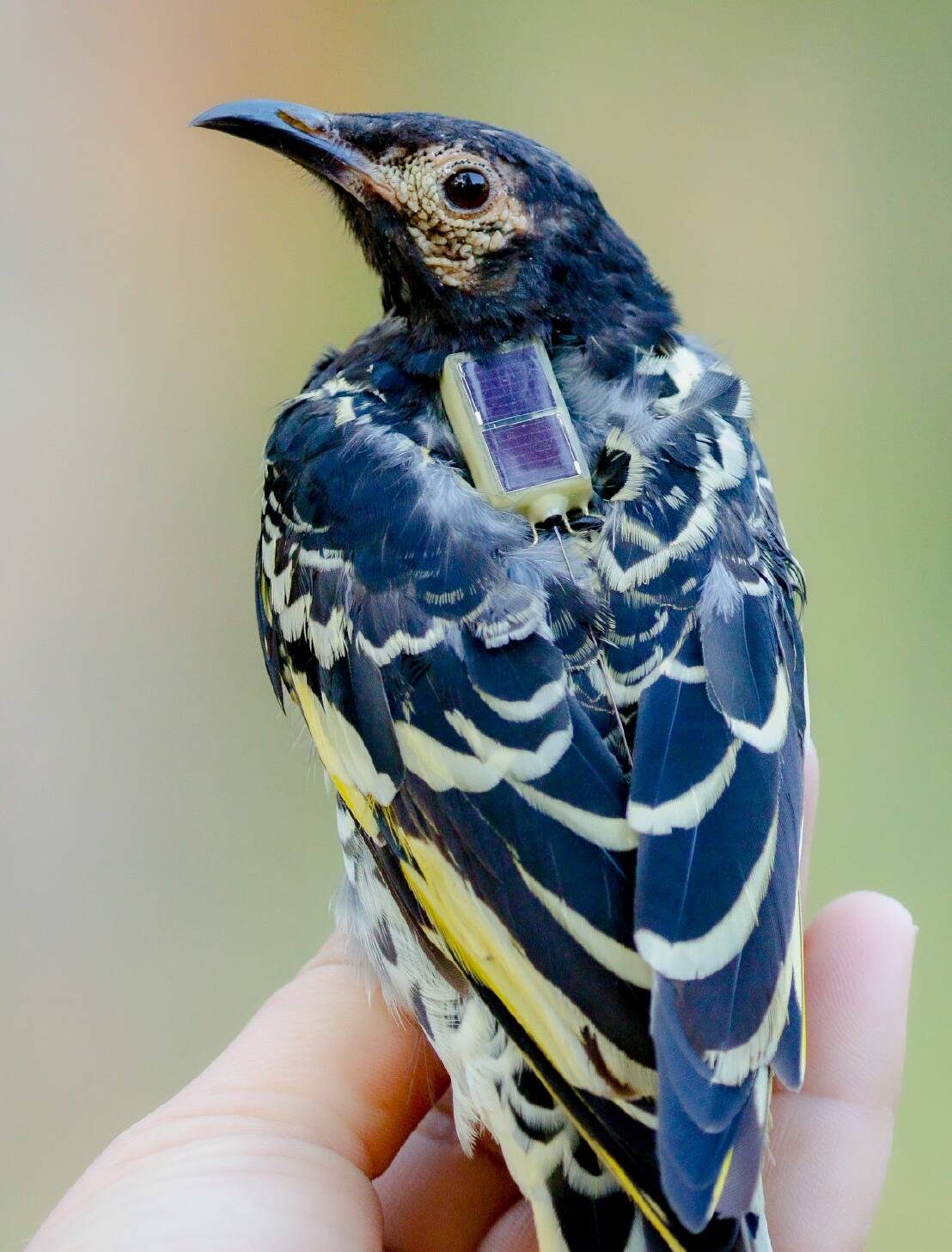
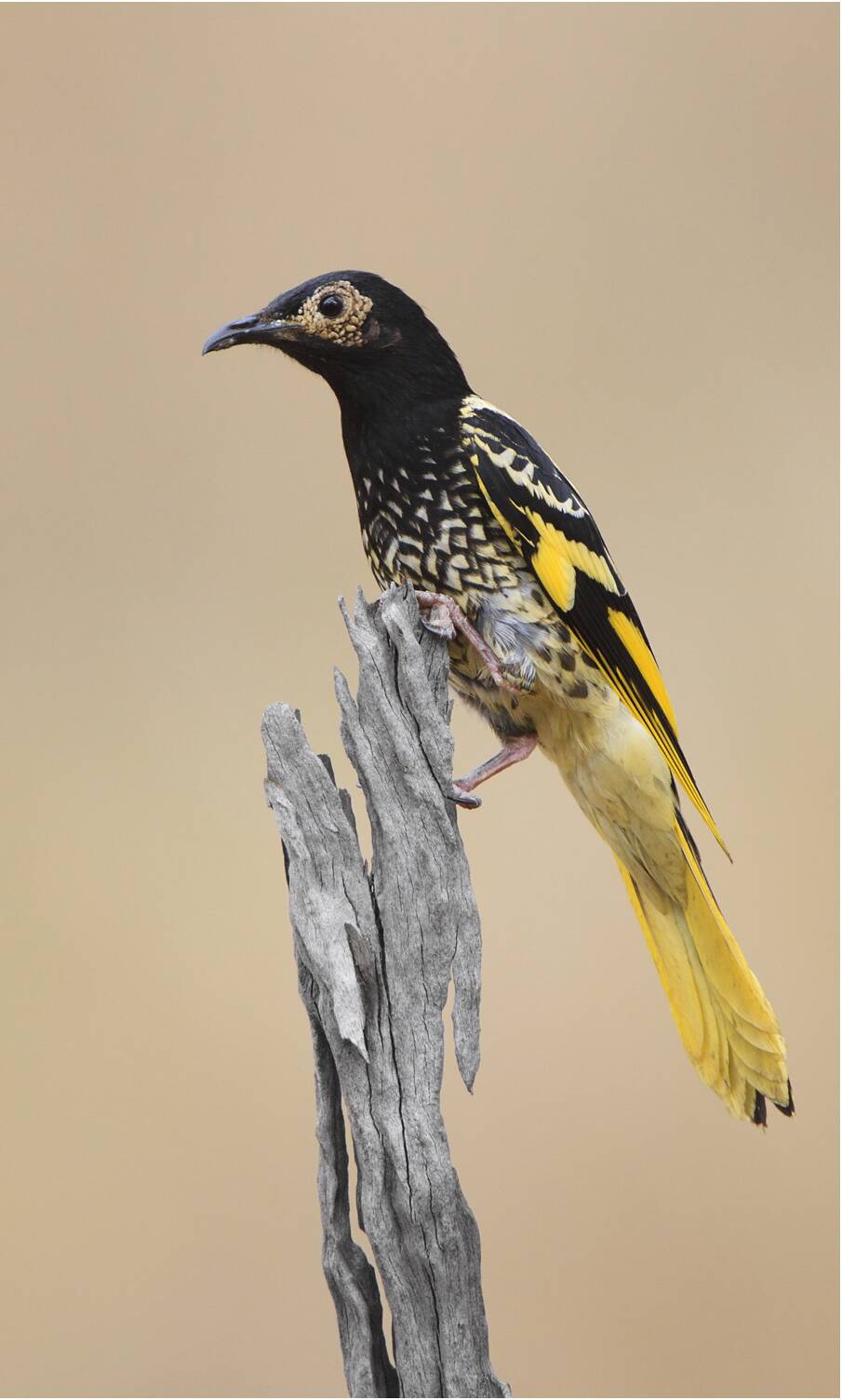
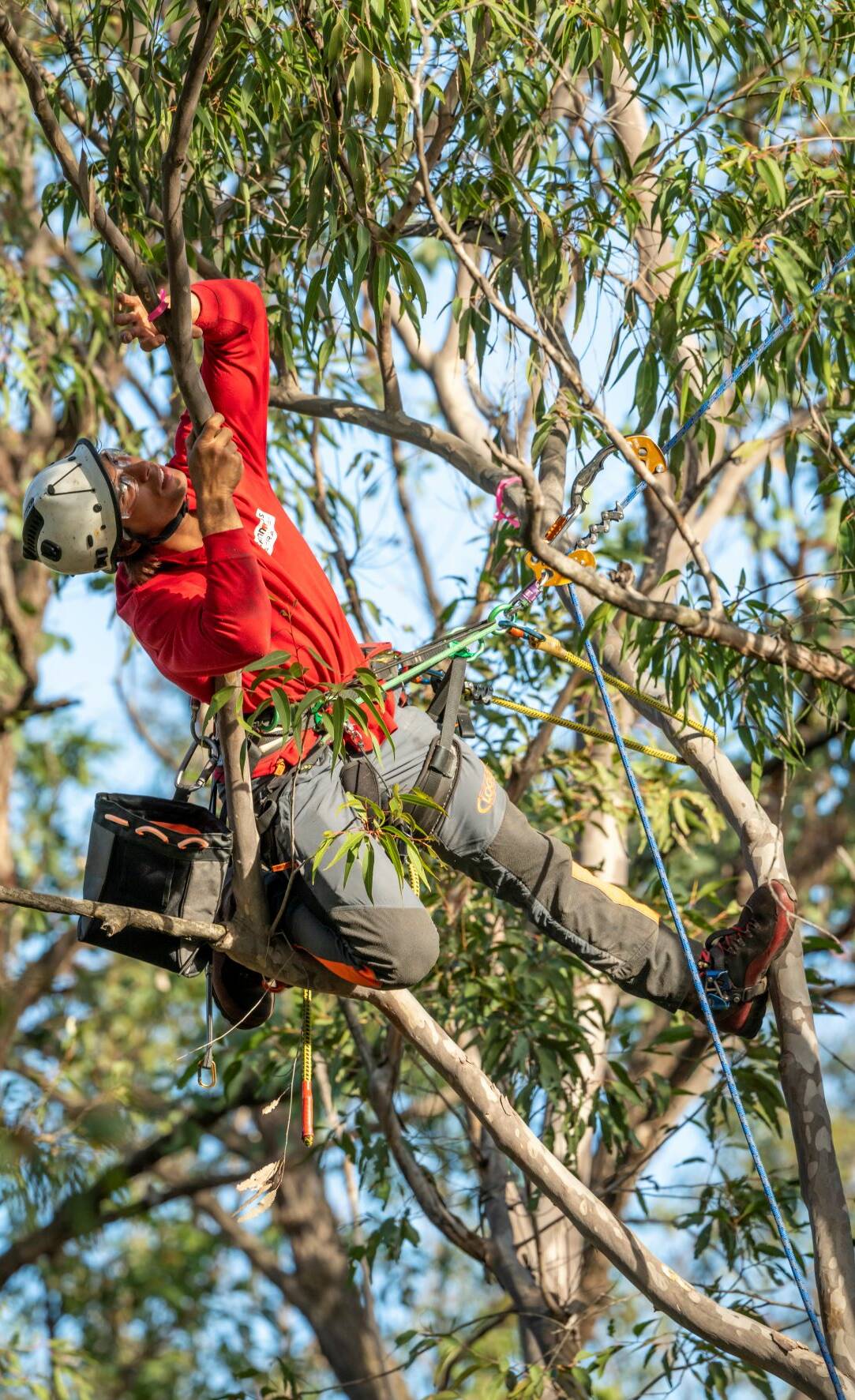
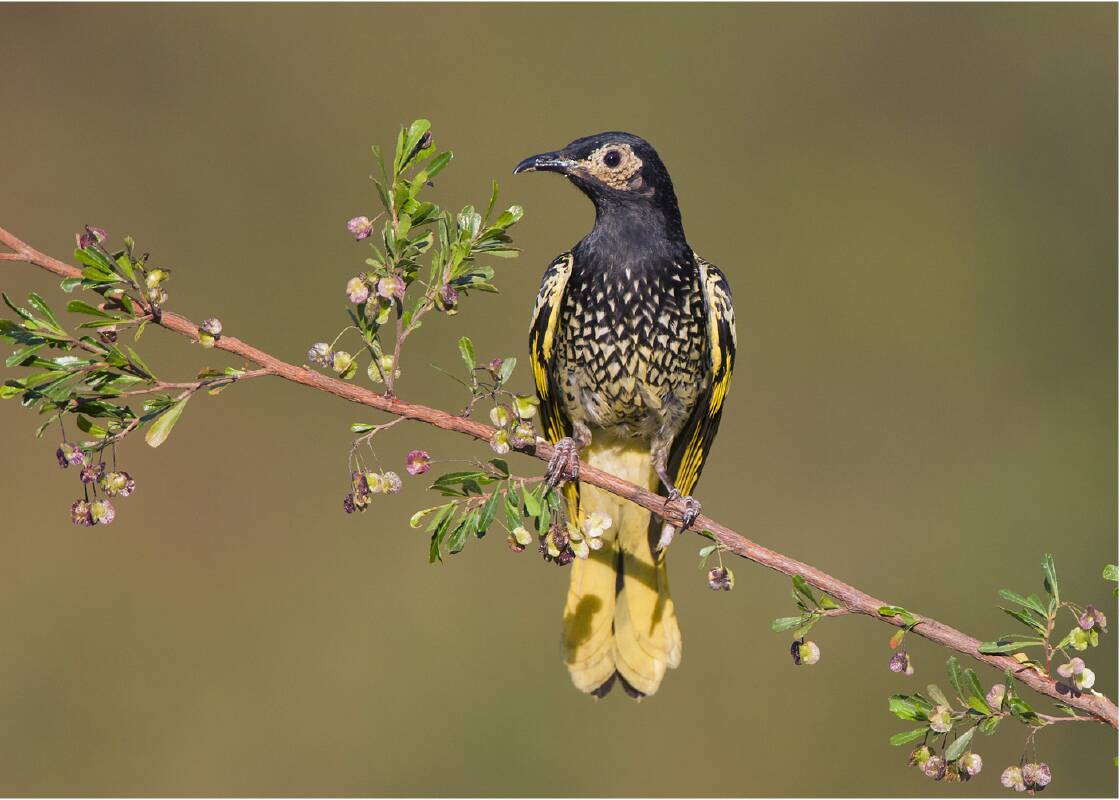

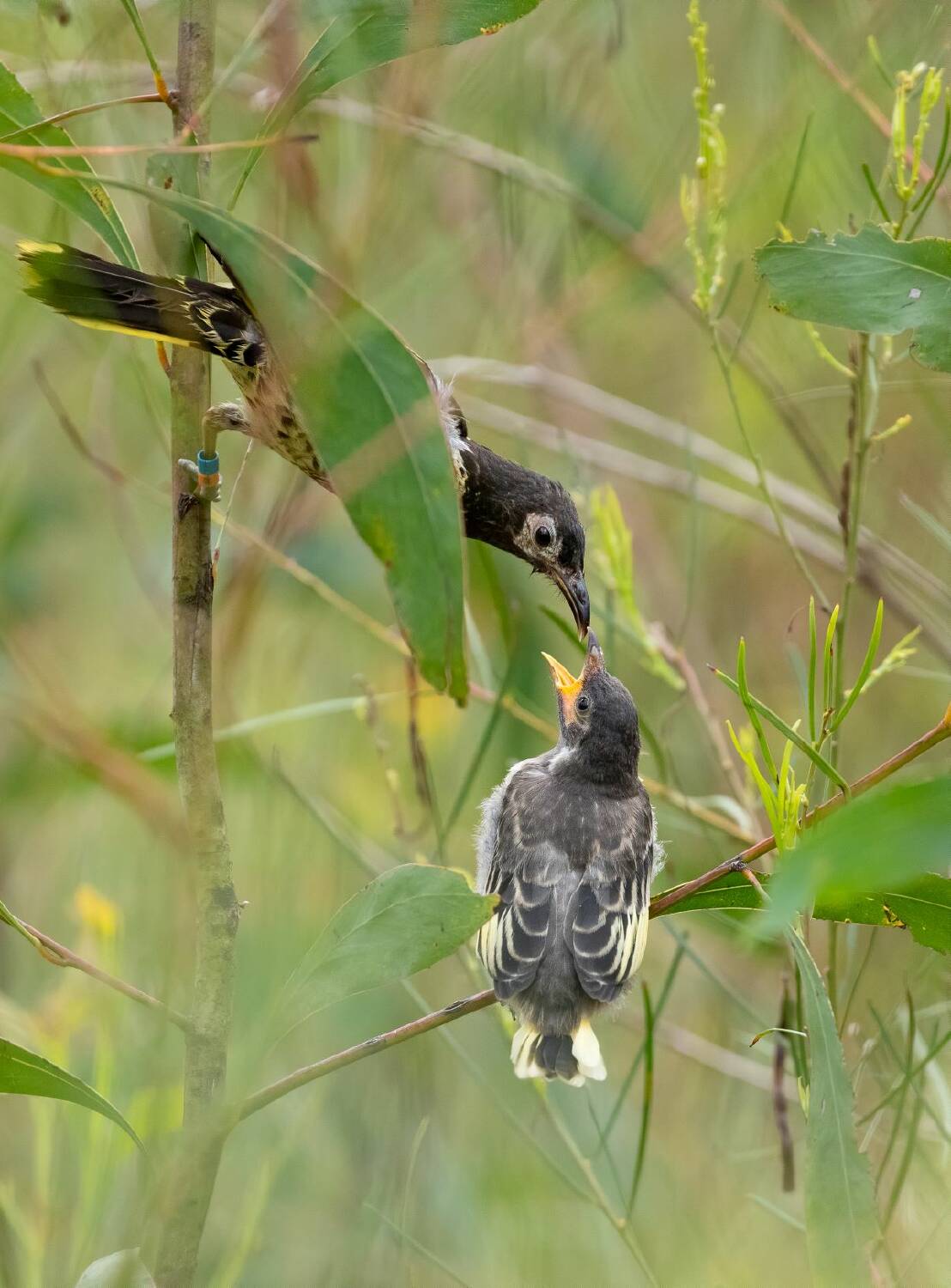
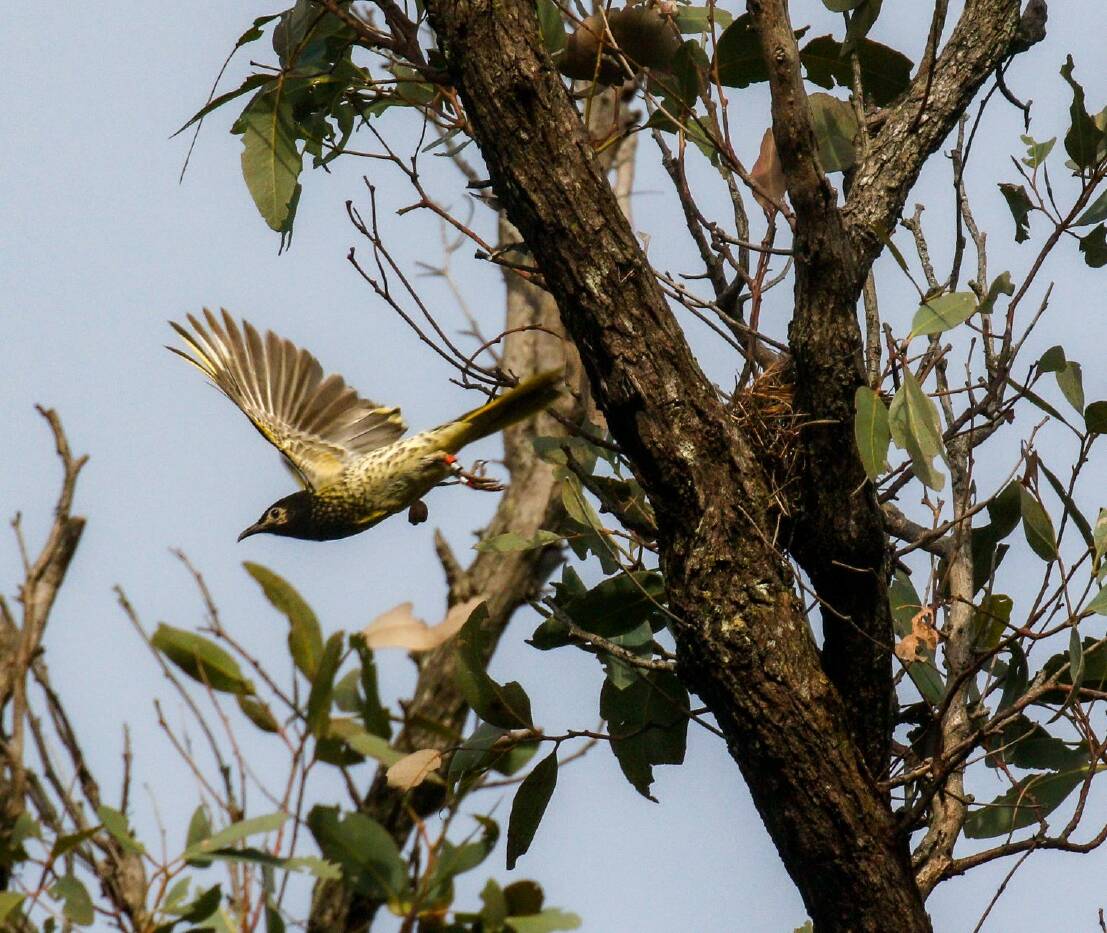
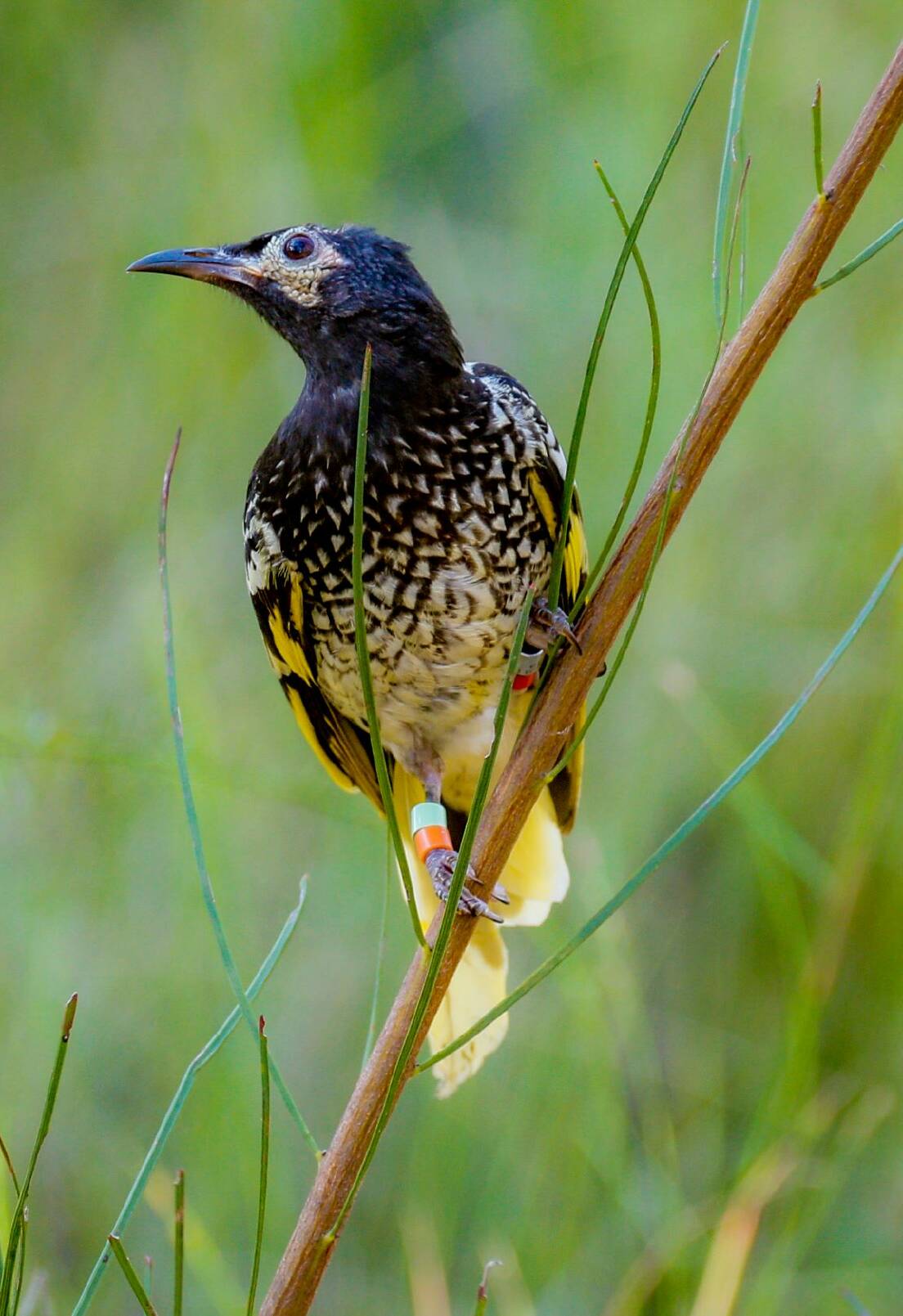
When spotted gum is in expectant bud, ushering in winter, watchers of birds in this region gear up. This year the seasonal blossoming in the Tomalpin Woodlands has even greater significance, as it nurtures hope for the very survival of the regent honeyeater.
Last spring 58 zoo-bred regent honeyeaters were released in the woodlands, which are within the Hunter Economic Zone, but are also a favoured habitat of this rare bird.
"The release that we did in October 2021 has been one of the most successful releases we have ever done for the species," says Dean Ingwersen, who leads the recovery team for the regent honeyeater at BirdLife Australia.
The team documented the birds nesting, watched them fly off for their summer retreat, and now await their return.
"It's one of the awful parts of this work, when you release birds that have come from captivity inevitably some will die," Ingwersen says.
To minimise the harsher end of reality, the recovery team work to leave as little as possible to chance. But they are forced to learn on the hop, and much remains in the hands of nature. As well, much depends on developers, and development green-lighting.
The 2021 release was not only the largest undertaken in a single location in NSW in the recovery team's 25-year history, it was the first release ever made mid-breeding season nationally.
Past releases were spread over different territories, and happened around this time of the year with the idea that the birds would "get used to the wild before they get used to breeding".
Last year that plan changed, as the importance of the Cessnock-Kurri Kurri forests became more apparent.
Other regent honeyeater habitats were in drought, going without a flowering cycle for years in succession. Even in Capertee Valley above the Blue Mountains, which is internationally renowned for its abundant habitat, buds wilted. And in some areas of the New England, crucial nectar trees were so parched they perished.
But apiarists who keep hives in the Tomalpin Woodlands began predicting "a bumper year".
"They were saying it was a one in 20-year event with the sequence of trees and number that were about to flower, and provide the resources, the rich nectar flow, that we needed the birds to have when we let them go," Ingwersen says.
"We wanted to test what would the birds do if we released them at such a good time, smack-bang in the middle of the breeding season."
In their captive upbringing, males are held separate from females.
They had 'getting to know each other' time in holding tents at the release site before taking to the wild.
"We had birds building nests within a week of leaving their holding tents in the field," Ingwersen says.
"They got straight down to business, they knew it was time to start breeding."
Regent honeyeaters once lived throughout Australia's south-east, and thrived in flocks of thousands along the once thickly forested floor of the Hunter Valley.
One season in the 1900s the regent honeyeater was so profuse in the Upper Hunter Valley "it was the most common call you could hear"; up to 100 birds could be found in just one tree. Now the population is so thinned out, it has become one of the first birds in the world to be officially catalogued as losing its culture of song.
Surveys in the late 1980s tallied regent honeyeaters in their prime locations during seasonal peaks.
"At the end of it they came up with a few hundred birds, that was really the catalyst for the formation of the recovery team," Ingwersen says.
"But despite all of these efforts the population has probably continued to decline."
A population viability analysis conducted by the Australian National University last year modelled scenarios, including "what happens if we do nothing".
"The take-home message is that the species probably would have been further down the extinction trajectory then we are now," he says.
"As sobering as that is, we think we have slowed the loss of the species. We just need to up the game. We need more chicks per nest to become adults."
Even in those perfect conditions of last spring, only one of the offspring of zoo-bred pairings fledged.
Ingwersen says that while less-institutionalised younger birds are better at surviving when released, their inexperience does show.
"Their first couple of nests are rubbish, and they don't put them in good places."
There's a lot to building a nest. In zoos ornithologists search the eaves of buildings for particular types of spider's webs and give the birds the sticky nest-binding silk. There are no such deliveries of building supplies in the wild world.
Further, the loss of big flocks of birds means the loss of "the whole safety in numbers thing when they nested", Ingerwersen says.
He is now working with the breeding team at the Taronga Conservation Society to increase releases to flocks of 100.
Newcastle-based recovery team coordinator Mick Roderick is tasked with practical innovations, including trying to block nest access by predators, such as gliders, possums, currawongs and kookaburras.
Roderick fast-tracked recovery of the long-flowered mistletoe, which provides nectar and high-canopy nest platforms, after it was killed off in bush fires in 2016 and 2017.
Rather than wait years for nature to take its course, Roderick figured he could collect seeds faster than a mistletoe bird, and hired arborists to replant them in the upper canopy.
Such detail is the oxygen of hope, as spring is not eternal. It is three short months, weather and habitat dependent.
In a trial, some of the birds released at Tomalpin Woodlands last year wore tracking devices. The aim is to know what regent honeyeaters do for the summer, and where they pitstop on longer flights, filling a knowledge gap in the bird's survival strategy.
Post-nesting last year, Roderick witnessed the "just fantastic" outcome of captive-born birds joining wild flocks.
"When we let these birds go we need them to assimilate with the wild birds," he says.
But for wild birds and zoo birds to couple up, which is considered crucial in the regent honeyeater's long-term survival, male zoo birds need to sing more appropriately, says PhD student Daniel Appleby, who is working with the Difficult Birds Research Group (a joint initiative of the Australian National University and Taronga Conservation Society).
The founding birds of the breeding program were hand-reared, "they didn't ever learn the song", Appleby says.
When he started a song-tutoring trial with regent honeyeaters at Taronga Zoo two years ago their calls were "quite often just one syllable".
After a year of listening to recordings of wild birds, the zoo birds started to sing more "but still not resembling the wild song at all".
And, by the second year, "they had realised it isn't another bird," Appleby says.
Two wild birds were then brought in to work with fledglings. But the young birds largely ignored the adults. This prompted the team to alter its focus, placing much smaller groups of young birds with each adult wild bird, "like a classroom, less pupils to a teacher".
The results were "much more promising".
"We talk about this as seeding culture," Appleby says.
"If we can reseed it we might have enough adults that can teach at other zoos. The exponential approach."
But without habitat, of a particular kind, all will be still be lost.
Roderick laments the regent honeyeater's "quite fussy" ways may be "their undoing".
"With habitat loss, any bird that moves around so much, when patches become further and further apart, it's a high risk lifestyle," he says.
The Cessnock-Kurri Kurri forests are the only place where the regent honeyeaters can harbour through winter then stay on to breed. But while they spread out across the forests for wintering, the Tomalpin Woodlands is "the nursery ground", Roderick says.
"There's something about that patch of bush that the regent honeyeater, and other birds as well, gravitate to."
While some of the woodlands is National Park, it is the former mining preserve (now zoned for development) that the birds prefer. Probably because the National Park is a young (thus less diverse) woodland due to being heavily felled in its State forestry past. The mining company cut timber too, but left the "grandmother" trees.
About half the land that the regent honeyeaters like so much is owned by a developer, who has had plans to built the world's biggest battery for use in renewable energy.
A church owns a small parcel of the land and the rest is country of the Mindaribba Local Aboriginal Land Council. The latest bird release was within the land council holding.
"The birds came home to country," says Tara Dever, who heads the land council.
"When you see them in the wild they are like sunshine. The yellow is just so intense, it flickers, it's unbelievable.
"I want everyone to see how beautiful they are in the wild, but if we don't do something, my grandchildren and your grandchildren won't. How do you explain that we let it happen on our watch? We've already lost so much."
Dever says there are almost 100 critically endangered flora and fauna species in the area, with some of them "found only there, in the shadows of Mt Tomalpin".
"We want this place safe," she says.
"It's important culturally and it's important ecologically."
There is concern that the efforts of scientists and the land council won't be enough if their land is allowed to be "treated as a buffer zone" for adjacent industry.
"This is way too significant and we need to protect all of it," Dever says.
When the welcome to country was spoken at the release ceremony last spring, it was also a milestone in the re-emergence of the local Wonnarua language.
"It was the first time that country has had its language spoken to it in over 150 years," Dever says.
That created an even stronger bond between the local Aboriginal community and "this tiny little bird", she says.
Before the release took place, Aboriginal elders walked the site and talked to country. Then a storm approached, threatening plans.
"It circled around the release site and left again," Dever says.
"It was almost like she, mother earth, said 'I'll give you this chance".
The regent honeyeaters need all the chances they can get.
"They are really up against it," Ingwersen says.
"There's a lot of things that are challenges with the species."
To the untrained eye the bushland around Cessnock and Kurri Kurri that regent honeyeaters love so much may look like "just another patch of bush".
Yet, those who are working to save the bird from extinction have predicted that the Lower Hunter Valley "will become increasingly important for the species".
"They will quite likely become more dependent on the Hunter Valley in the long term," Ingwersen says.







